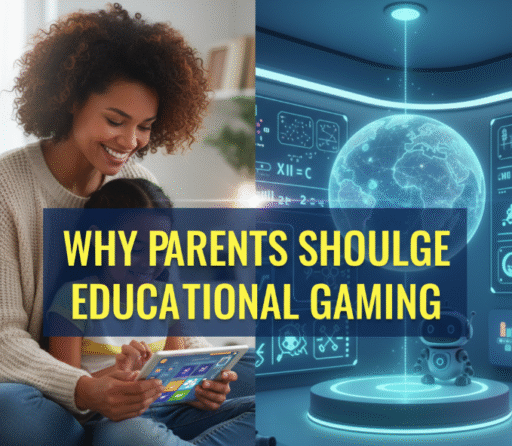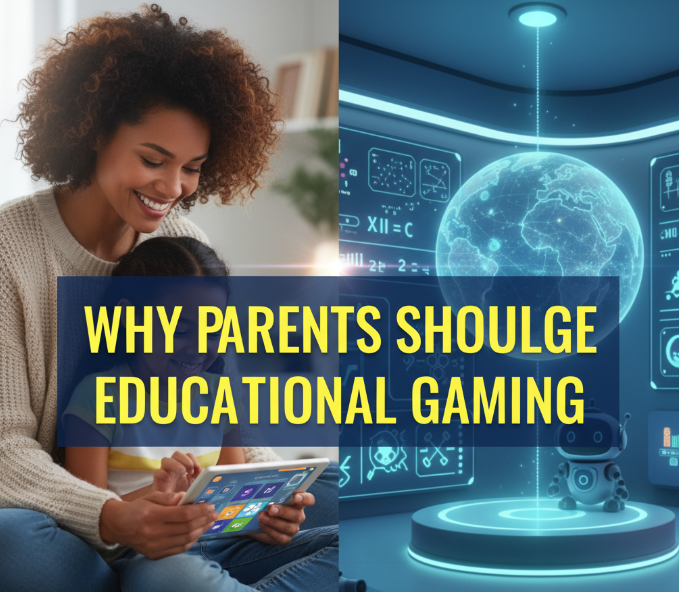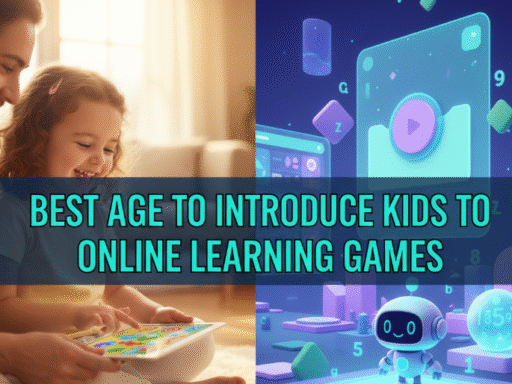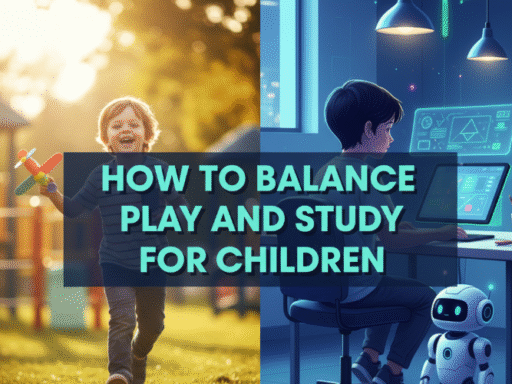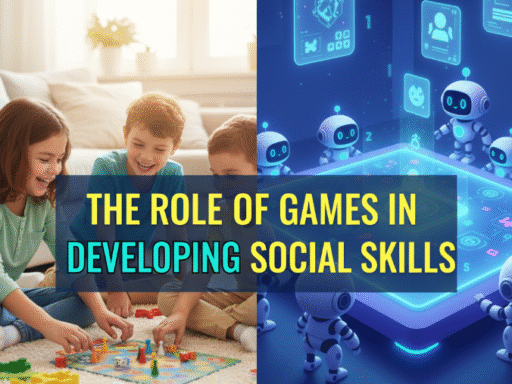Introduction: Learning in the Digital Age
Kids today live in a world where screens are everywhere. From smartphones to laptops, digital tools are part of their daily lives. Many parents worry about children spending too much time on video games. However, not all games are harmful. In fact, educational gaming is becoming one of the best ways to combine fun with learning.
Instead of fighting against technology, parents can use it to their advantage. Games that teach problem-solving, creativity, teamwork, and real-world skills help children grow in ways traditional learning sometimes cannot. Encouraging kids to play educational games can turn screen time into meaningful learning time.
This article explains why parents should actively promote educational gaming, what benefits it brings, and how to choose the right games for children.
The Shift From Traditional Learning to Game-Based Learning
For many years, learning meant textbooks, classroom lectures, and homework. While these methods work, they sometimes fail to keep children engaged. Today’s students often learn better when information is presented in interactive, game-like formats.
Educational gaming does not replace books or teachers, but it adds an exciting new dimension to learning. Games allow children to:
-
Explore topics at their own pace.
-
Make mistakes safely and learn from them.
-
Develop real-world skills like critical thinking, logic, and teamwork.
-
Stay motivated through rewards and progress levels.
Key Reasons Parents Should Support Educational Gaming
1. Makes Learning Fun and Engaging
Children naturally enjoy playing games. When learning is tied to a game, kids are more likely to stay focused. Educational games turn boring lessons into adventures filled with challenges, rewards, and excitement.
For example:
-
A math game may use puzzles and levels instead of worksheets.
-
A geography game may include building maps and exploring countries.
-
A spelling game may let kids “unlock” treasures by forming correct words.
When kids enjoy what they are doing, they learn faster and remember better.
2. Builds Critical Thinking and Problem-Solving Skills
Most educational games are designed with challenges that require logic, reasoning, and problem-solving. Kids learn to:
-
Analyze a situation.
-
Try different approaches.
-
Adapt strategies when one method doesn’t work.
For instance, puzzle games like Sudoku or logic-based adventure games teach children how to think critically and make smart decisions.
3. Encourages Creativity and Imagination
Many games allow children to create worlds, design objects, or develop characters. This freedom sparks creativity, which is an essential skill in school and future careers.
Examples of creativity-boosting games:
-
Minecraft Education Edition → teaches building, designing, and coding.
-
Art-based apps → improve drawing and digital design skills.
-
Storytelling games → encourage writing and imagination.
4. Improves Collaboration and Social Skills
Some educational games are multiplayer, which means kids must work together, share ideas, and communicate. These skills are just as important as academic knowledge.
Parents often worry that gaming is isolating, but collaborative games can:
-
Teach teamwork.
-
Improve leadership skills.
-
Encourage empathy and respect for others.
5. Enhances Memory and Focus
Many games require players to remember sequences, strategies, or patterns. This strengthens memory and attention span.
For example:
-
Matching card games boost short-term memory.
-
Strategy-based games improve long-term planning.
-
Language learning games enhance vocabulary retention.
6. Teaches Time Management and Discipline
Educational games often involve levels, deadlines, or tasks that must be completed within a certain time. This naturally teaches children how to manage time and stay disciplined to achieve goals.
7. Provides Real-World Knowledge
Some games are designed to simulate real-life experiences. Children can learn science, history, economics, or even environmental awareness in ways that are interactive and practical.
For example:
-
Flight simulator games teach basics of aeronautics.
-
Business management games explain supply and demand.
-
Environmental games promote sustainability awareness.
8. Encourages Lifelong Learning
When children discover that learning can be fun, they are more likely to develop a growth mindset. They no longer see learning as a boring task, but as an exciting challenge. This attitude helps them in school, college, and beyond.
Comparison Table: Educational Gaming vs. Traditional Learning
| Aspect | Traditional Learning | Educational Gaming |
|---|---|---|
| Engagement | Passive (reading, listening) | Active (interactive, hands-on) |
| Motivation | Grades & teacher feedback | Rewards, levels, achievements |
| Flexibility | Fixed pace for all students | Self-paced learning |
| Skills Developed | Academic knowledge | Critical thinking, creativity, teamwork |
| Retention of Knowledge | May forget after exams | Retained through practice & fun |
| Stress Level | Higher due to pressure | Lower due to enjoyable approach |
Common Misconceptions About Educational Gaming
Many parents hesitate because of myths surrounding video games. Let’s clear them up:
-
“All games are a waste of time.”
→ False. Games designed for education enhance learning and life skills. -
“Kids get addicted to educational games.”
→ False. Proper time limits and parental involvement prevent overuse. -
“Games replace teachers.”
→ False. Games support teachers and parents but cannot replace them. -
“Only younger kids benefit from educational games.”
→ False. Teens and even adults learn valuable skills through gaming.
Tips for Parents: How to Encourage Educational Gaming
Step 1: Choose the Right Games
Parents should select games that match their child’s age, interests, and school subjects. Look for:
-
Age-appropriate ratings.
-
Clear educational value.
-
Balanced mix of fun and learning.
Step 2: Set Healthy Boundaries
Educational gaming works best when balanced with outdoor play, family time, and studies. Parents should:
-
Limit daily screen time.
-
Encourage breaks during gaming sessions.
-
Monitor gameplay without being over-controlling.
Step 3: Play Together as a Family
When parents join the game, it becomes a bonding activity. Kids feel supported and parents can track learning progress.
Step 4: Connect Learning With Real Life
After playing a game, discuss what was learned. For example:
-
A history game → talk about real historical events.
-
A math game → apply problem-solving to daily tasks like shopping.
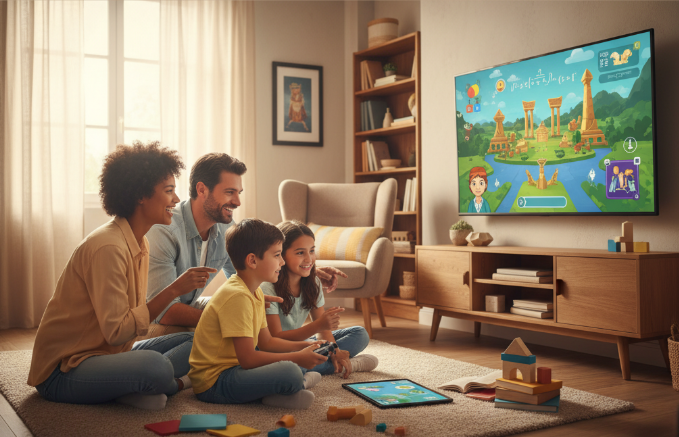
Why Parents Should Encourage Educational Gaming
Real-Life Examples of Popular Educational Games
Here are some widely recognized games that parents can encourage:
-
Kahoot! – Fun quizzes for all subjects.
-
Duolingo – Language learning through challenges.
-
Prodigy Math – Engaging math adventures.
-
Minecraft Education Edition – Creativity, coding, science, and design.
-
National Geographic Kids Games – Geography, animals, and nature.
-
TypingClub – Improves typing and writing skills.
Infographic: The Benefits of Educational Gaming
(Imagine a visual here with icons for each benefit such as brain, teamwork, creativity, memory, fun, and growth mindset)
Frequently Asked Questions
Q1: Are educational games safe for kids?
Yes, when parents choose age-appropriate, well-reviewed games and supervise usage.
Q2: How much time should kids spend on educational gaming?
Experts suggest 1–2 hours per day, balanced with other activities.
Q3: Do educational games really improve school performance?
Yes. Studies show kids who use educational games perform better in subjects like math, reading, and problem-solving.
Q4: Should parents pay for premium educational games?
Free options exist, but premium versions often offer more content and fewer ads. Parents should decide based on budget and value.
Conclusion: Turning Playtime Into Brain Time
Instead of banning games, parents should recognize the potential of educational gaming as a tool for growth. These games not only make learning enjoyable but also prepare children for real-life challenges by boosting problem-solving, creativity, teamwork, and focus.
By choosing the right games, setting healthy limits, and participating actively, parents can transform screen time into quality learning time. Educational gaming is not just entertainment—it’s a smart investment in a child’s future.
